► CAR’s review of the full-size Range Rover
► Diesel, petrol, plug-in hybrid and long-wheelbase versions
► Still one of the swankiest SUVs on the market
Playing spot the difference with the new Range Rover is a surprisingly tricky game. Yes, the vertically stacked rear lights are a giveaway, but you really need to be holding a picture of the old car to truly appreciate the metalwork changes.
Smoother and less cluttered than before, they hide what can only be described as a revelation beneath the skin. This L460 generation hides a whole new platform stuffed full of new hardware, software and powertrains. So how has it all come together?
At a glance
Pros: Refined and luxurious, immensely capable, plenty of performance
Cons: Near-buttonless interior is a little fiddly, not exactly sharp to drive
What’s new?
This generation of Range Rover, codenamed L460, has been with us for a couple of years now but Land Rover’s design means it looks timeless. It might be a little spot-the-difference design-wise, but that’s kind of the point – and it hides a whole new platform stuffed full of new hardware, software and powertrains.
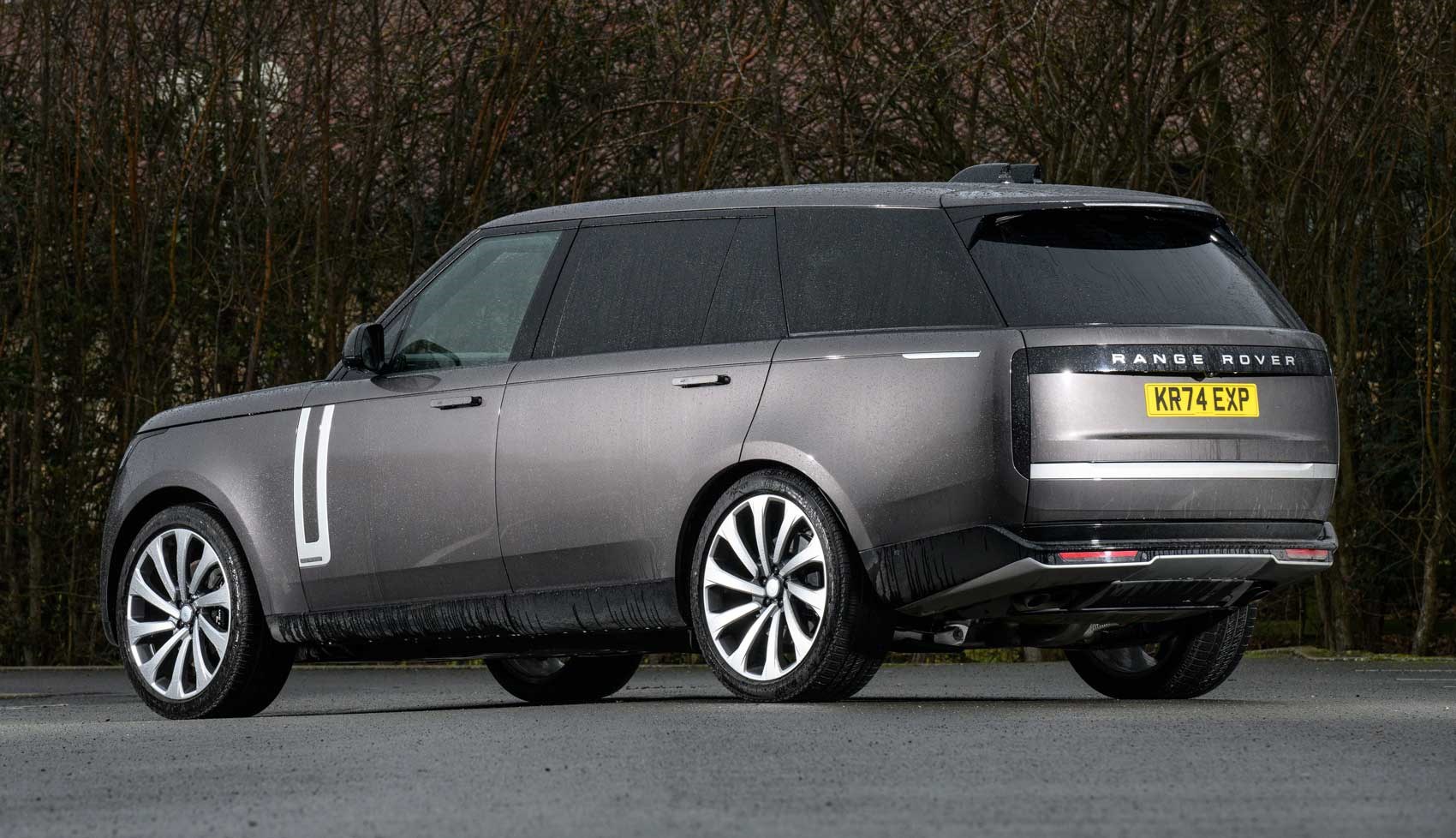
It’s an all-new car bejewelled with most every bit of mass-hiding chassis tech imaginable, not to mention thousands of hours of dynamic calibration work by Land Rover’s artisan engineers.
And Land Rover needed to do that, given how competitive the luxury SUV space is these days. LR arguably led the charge for posh 4x4s with the original Rangie but – with the likes of Porsche, Bentley, Lamborghini and Rolls-Royce having been in on the act for quite a while now – the Range Rover needs to maintain its individuality and its dominance.
What are the specs?
To keep the Range Rover distinctive, there are no end of permutations and variants. Two wheelbase options are available, with the long-wheelbase version being available with five or seven seats. Specs range from SE, climbing to HSE then Autobiography then topping out at SV – the marker for JLR’s Special Vehicles division that allows for deep customisation.
Depending on your spec, you’ll have the ability to choose from two V6 diesels (either 297bhp or 345bhp), two plug-in hybrid (with either 454bhp or 523bhp) variants and two V8 petrol engines (offering 523bhp or 607bhp exclusively for the Range Rover SV).
What’s it like to drive?
On the move, on the kind of roads Range Rovers have traditionally endured rather than enjoyed, the L460 is effortless, even at speed. You sit high, of course, with fantastic visibility. The steering is ideally weighted, neither scary light nor pointlessly heavy, and with the precision to help shrink the car. Body roll is well controlled, particularly in Dynamic mode, the Range Rover moving a little on its suspension on turn-in before settling and holding a line with its physics-defying combination of anti-roll control, torque vectoring and intelligent all-wheel drive.
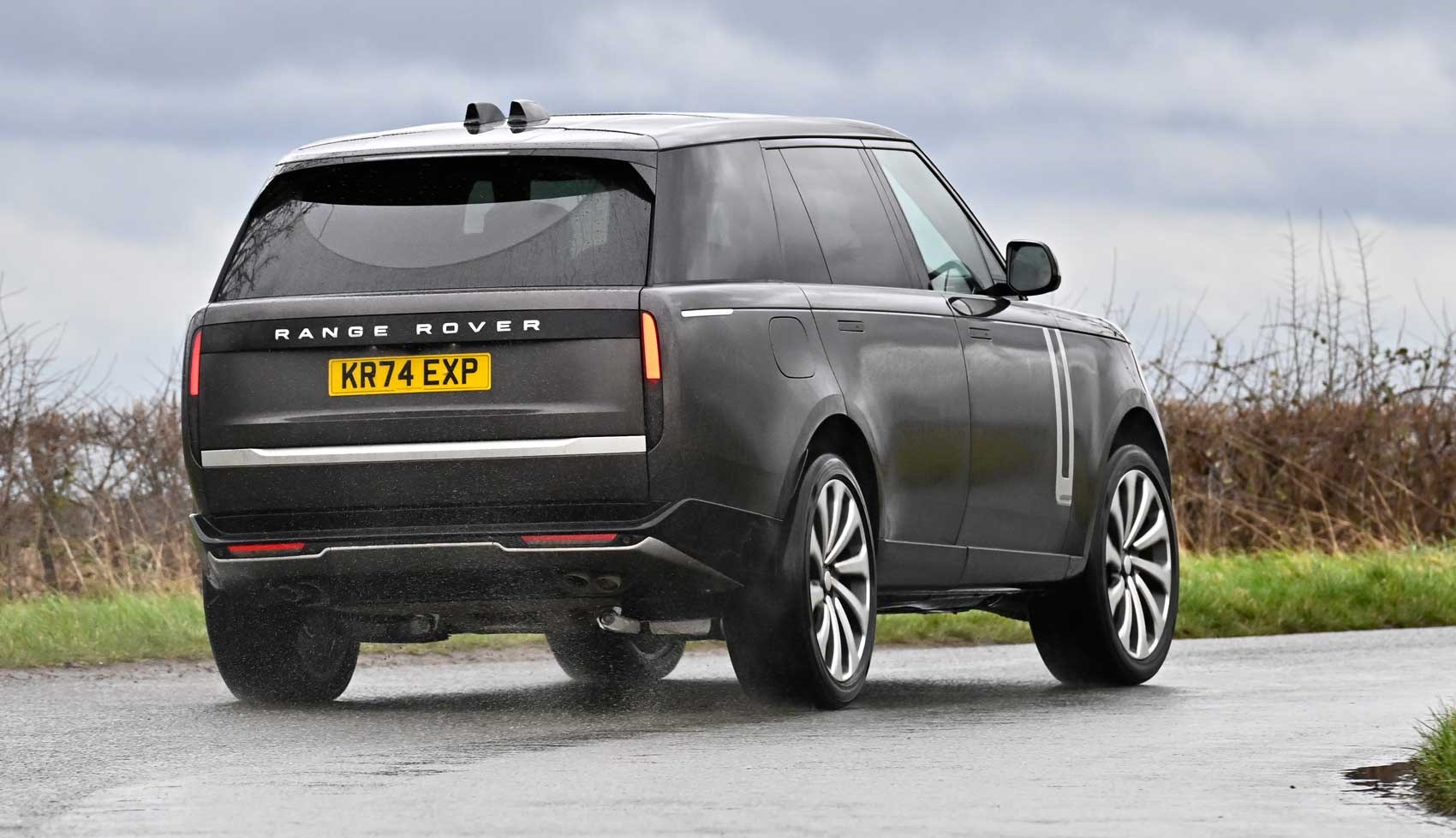
The old car’s vagueness and wallow has been well and truly banished, although don’t think for a moment the Range Rover corners like a performance SUV. The anti-roll bars still allow a few degrees of lean before propping things up and there’s still an enjoyable waft to proceedings. In other words, body control is as tight as it needs to be without eliminating the character that so many have fallen for.
Get ham-fisted or greedy and it will protest, of course, and the ESC is clumsy if it feels compelled to step in. But drive the Rangie with the appropriate sensitivity and this new L460 is a revelation; swift, enjoyable and almost entirely undemanding. The impressively intuitive rear-steer is key to this newfound dynamic flair, but also to a new, more approachable and less intimidating side to its character.
Yes, this is still a big car, yet it’s so much easier to thread through urban streets and manoeuvre in tight spaces on and off-road than before. More impressive is the way the system is integrated, virtually shortening the car’s wheelbase without requiring any additional brain power to factor in the rear wheel’s movements. That’s not something you can always say about four-wheel steer.
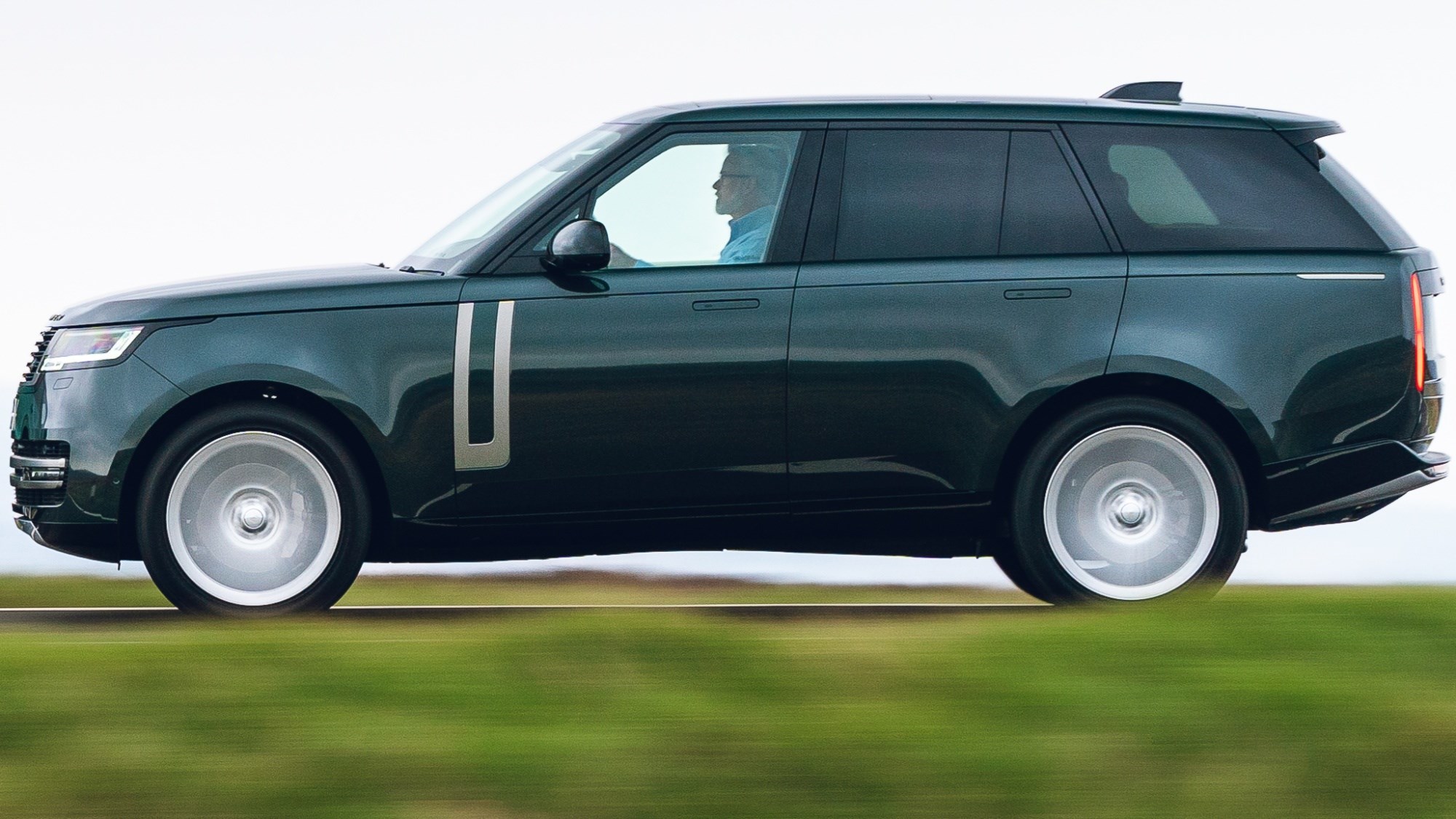
The engine range gives you plenty of choice. The D350 feels like the best fit here, as it’s quiet and torquey enough to pull what is still a relatively heavy car even with all the Rangie’s weight-saving measures. The 542bhp V8, derived from BMW, is gorgeously charming with a burly engine note and far more performance than is required. Yes, it’s over the top – but when you’re slamming down six figures on a luxury SUV, it almost feels like a reward
Almost regardless of speed and surface, this thing cossets like a Range Rover should with a pillowy soft ride even on really large wheels. Smaller wing mirrors, active noise cancelling via microphones in the wheel wells and the cabin speakers, that stiffer new body structure and details like the front differential being mounted directly to the engine, to use the motor as a mass damper – it all adds up to a sumptuously near-silent car on the road.
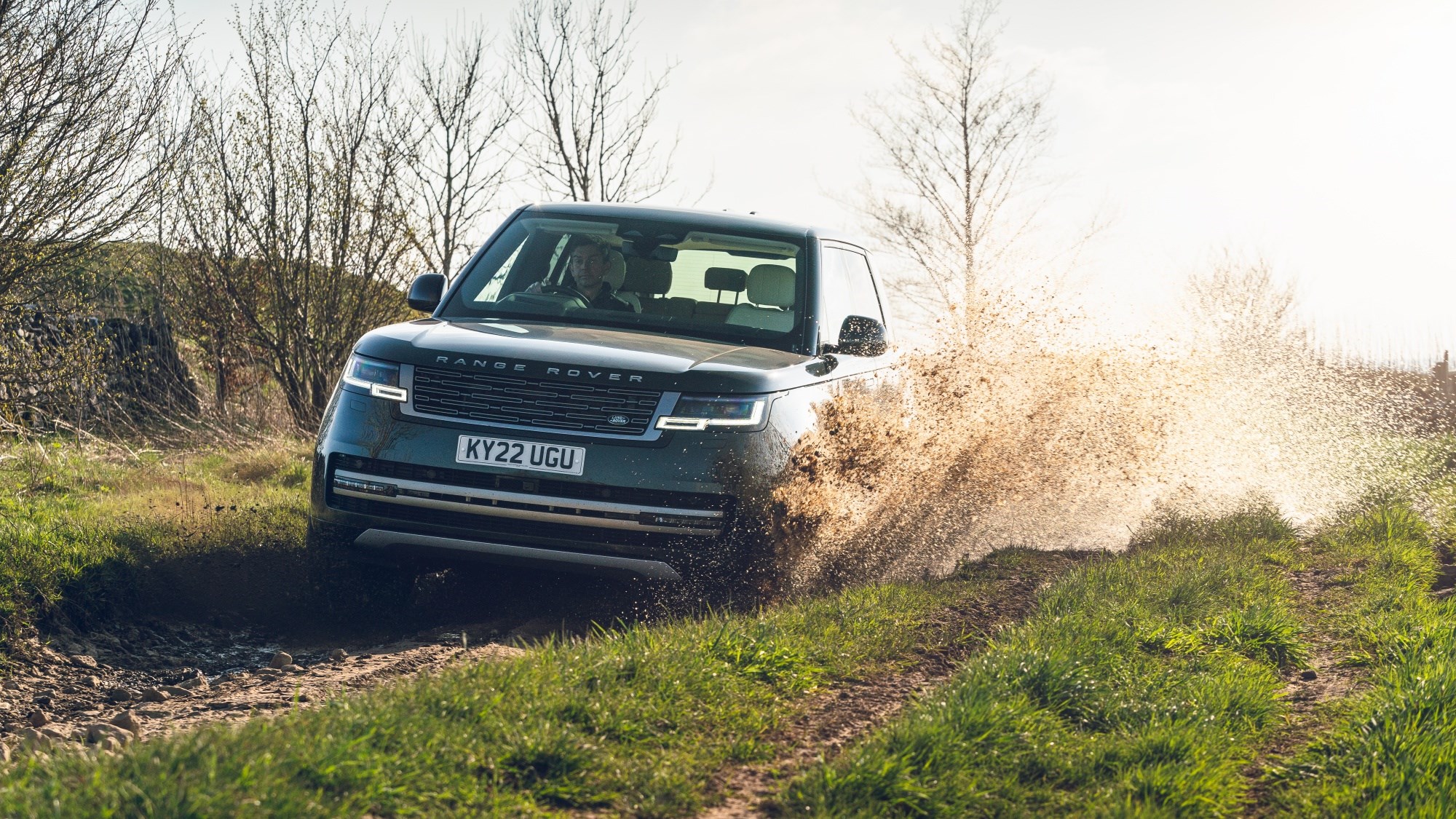
We tested the car on a steep, rocky trails and muddier tracks in the UK which, though not easy, barely scratched the surface of the car’s ability. A combination of the diff locks, clever traction control and impressive suspension travel gives great traction even on road-biased tyres, while the surround view cameras and four-wheel steer make even the tightest spots surprisingly stress free. Impressively, where a Defender needed some shunting to get around the tightest bends on the course, the longer Range Rover would get around it in one with ease. The hybrid models suffer slightly lower ground clearance due to the underslung battery.
What’s the interior like?
Quality is a big step on from the old car, and the SV derivatives (integral to this programme from the beginning) offer the scope for detailing, paints, finishes and individualisation to rival that of Crewe’s Mulliner cars.
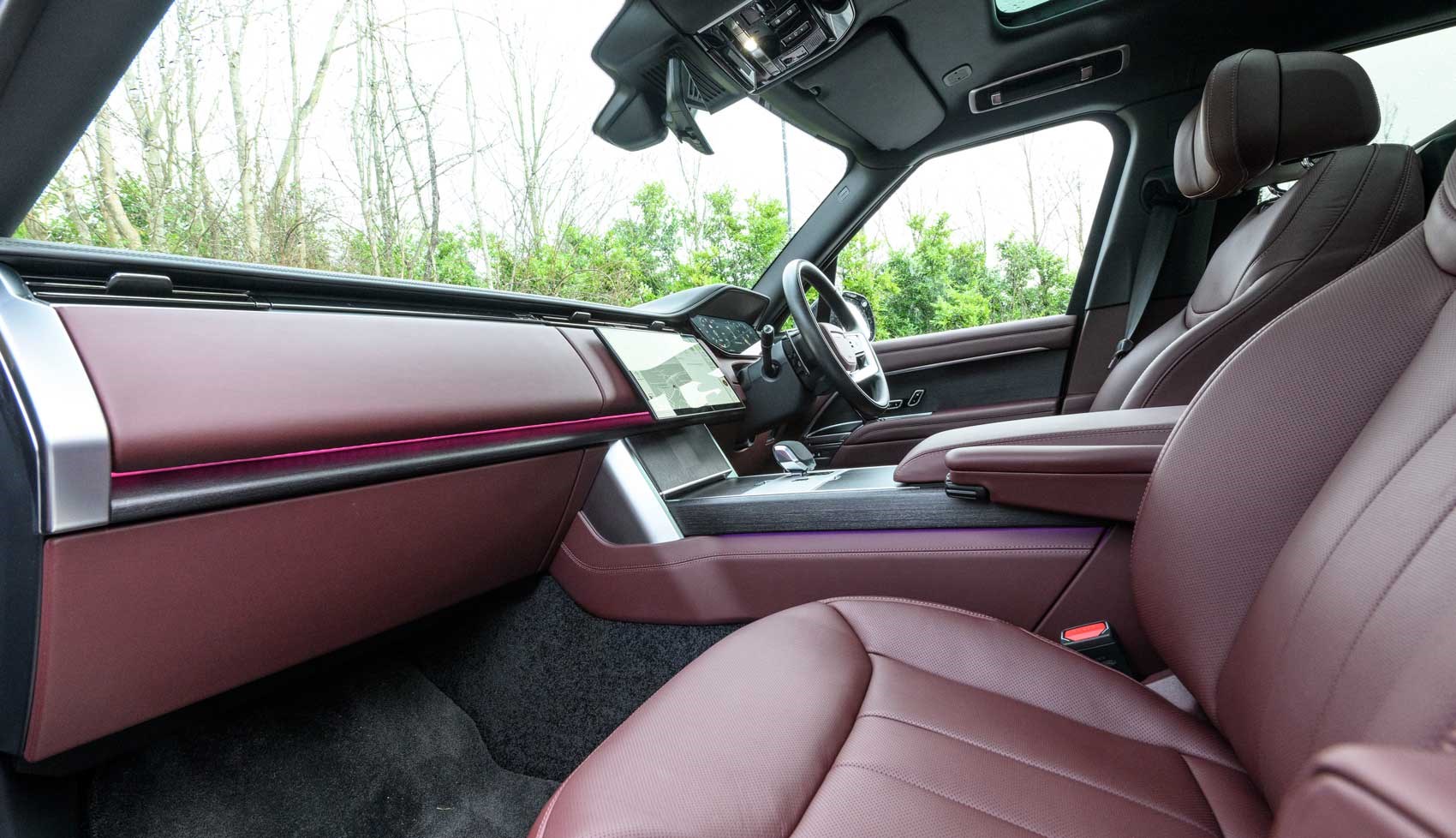
But the style is very different to Bentley’s. The aesthetic is more restrained, almost stark, though it never feels anything but there’s an artfully chosen set of materials and the abundance of light and space. There’s another 75mm between the axles on this version, and it makes for decadent accommodation for front- and second-row occupants alike.
Talking of which, there are myriad seating options this time around. The core car seats five. Go long wheelbase and you’ve the choice of two rows or three rows, seating seven. SV versions of the core car and the four- or five-seat long wheelbase version are available.
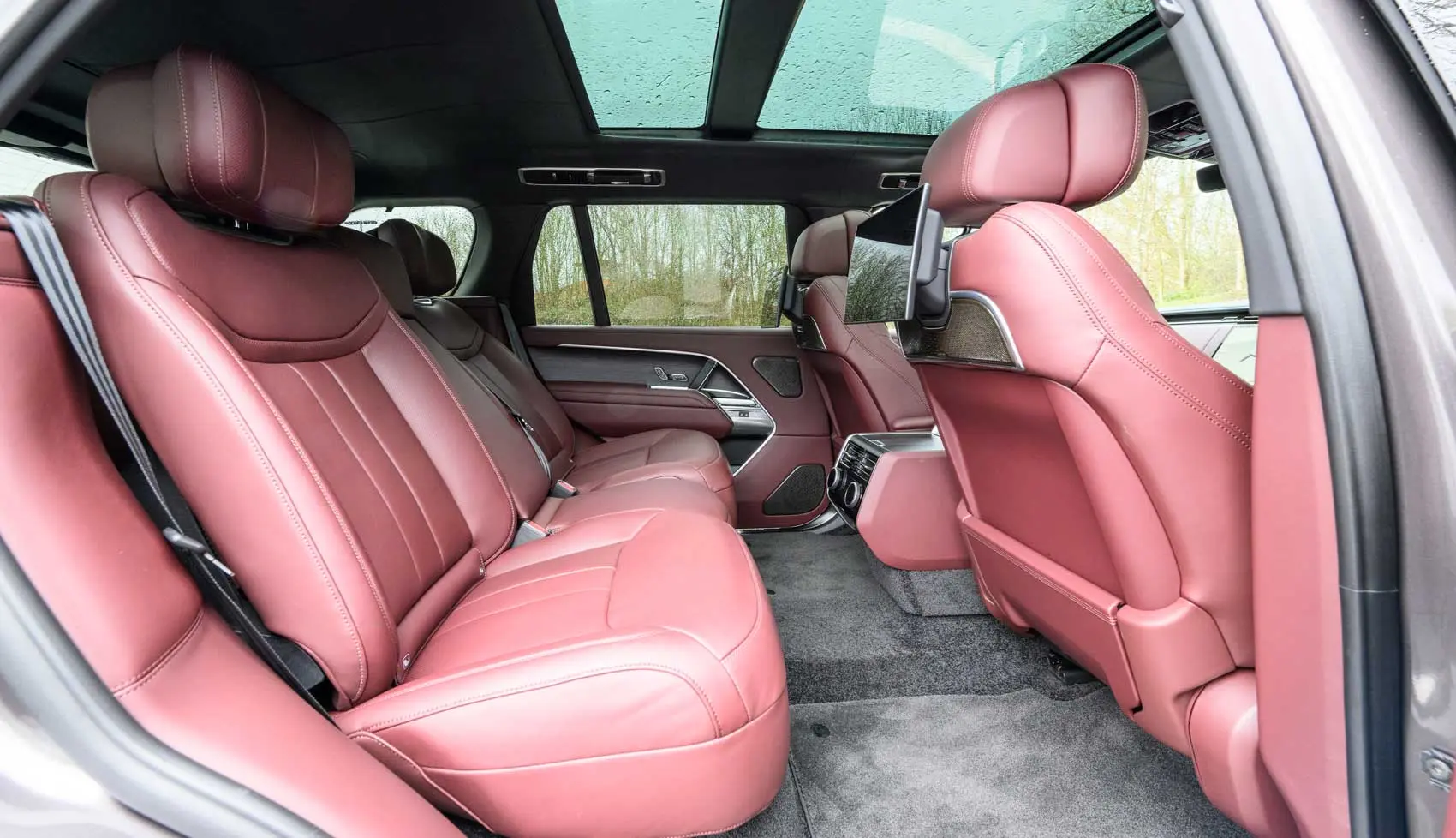
Even in short wheelbase form, there’s generous rear space while the availability of electrically sliding and reclining rear seats add a touch of luxury. You can easily control the rear window blinds using the electric window switches while our test car’s electrically operated centre armrest (itself a bit of a gimmick) hid a touchscreen control centre. Given the huge windows and elevated seating position, it’s a comfortable, cosseting choice that gives everyone a far better view than if they were stuck in an S-Class or even Bentayga.
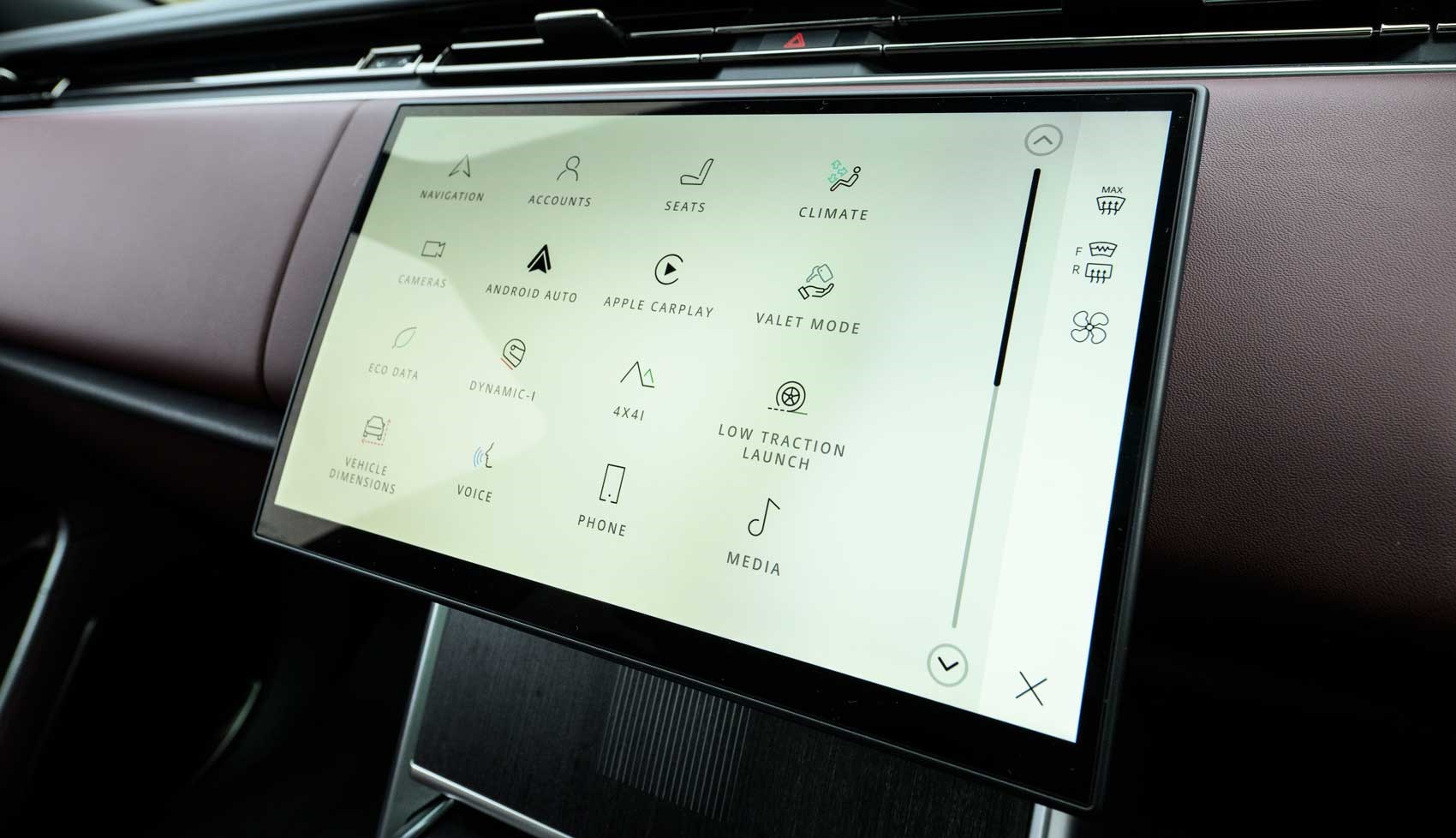
The infotainment is driven via a 13.1-inch landscape-orientated touchscreen and it’s one of the better systems to use, with clear and crisp graphics, little and some useful functionality. The luddite in us still laments the removal of all the Range Rover’s physical buttons in a model year update, but software engineers have at least put some thought into adding some quick-access controls for climate and heavily used functions on the screen’s edges.
Before you buy
The V8 is so utterly charming, but will feel like overkill. Go for a D350, as it suits the car down to the ground. It’s barely any slower out on real words, incredibly civilised for a diesel and lends the car a wonderfully laidback character. That it’s also more cost-effective both to buy and to run just adds to the appeal. With a wry smile, Land Rover’s engineers admit that, as diesel’s popularity continues to nosedive, it’s only gone and crafted its most compelling diesel installation yet…
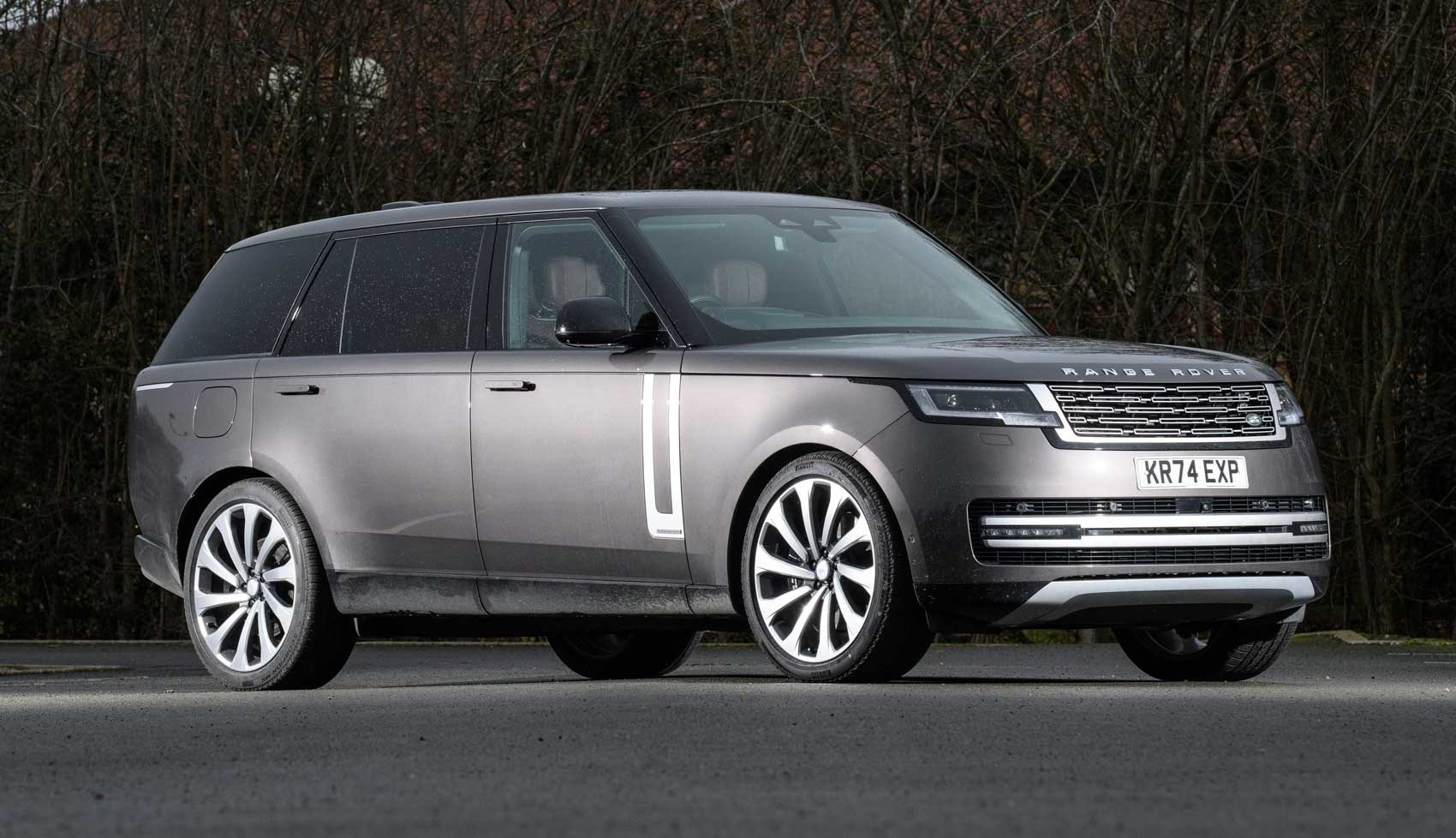
Naturally, though, if you’re in the orbit of a Range Rover you have plenty of choice. A Bentley Bentayga will feel more opulent than this, a Rolls-Royce Cullinan even moreso (but you’re looking at potentially triple the price there). You have sportier SUVs to contend with, as Aston Martin’s extremely good DBX and Ferrari’s Purosangue come into play.
Verdict: Range Rover
This generation Range Rover has taken great strides over its predecessor, itself no slouch. Easier on the eye inside and out, the L460 is also infinitely more capable and rewarding to drive on the road, no less capable off it, roomier, more practical and quieter.
Its place in the world is much the same as that occupied by its predecessor, but it now occupies that space with an imperious confidence that borders on swagger. Yes, the Bentley Bentayga is more opulent and an Aston Martin DBX can handle better, but few cars are as comfortable as the Range Rover or quite so well rounded.
Specs are for a P530 Autobiography LWB